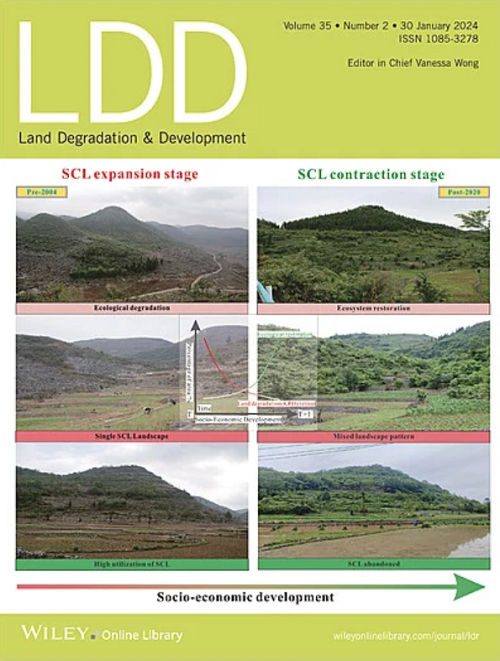Far-Reaching Impact of Microplastics on Agricultural Systems: Options for Mitigation and Adaptation
IF 3.6
2区 农林科学
Q2 ENVIRONMENTAL SCIENCES
引用次数: 0
Abstract
Microplastics has emerged as a pervasive pollutant with far-reaching implications for agriculture. This review paper evaluates existing research on microplastics in agricultural systems, exploring their impacts on land, crop growth, farm animals, and consumer health. Using the PRISMA framework and systematic review process, 811 papers were identified in the initial search, and only 164 papers were used for this study after following the inclusion and exclusion criteria. Our study found that high-density polyethylene and polyvinyl chloride are widely used plastic types in agriculture, followed by polypropylene, polystyrene, and polyethylene terephthalate. This prevalence is likely due to the extensive use of plastics in agriculture systems, such as for mulching, handling harvested products, bags for fertilizers and pesticides, samplings, and seed storage. The study found serious adverse consequences of microplastics on crops, animal health, soil, and consumers. It also highlights the need for comprehensive strategies to mitigate these impacts, by using bioplastics, application of treated water for irrigation, proper disposal of plastics, and following sustainable agricultural practices. Adaptation measures such as soil remediation, different microplastic removal technologies, and policy interventions emerge as a crucial strategy to cope with microplastic pollution. The paper concludes with a call for interdisciplinary research to better understand the complexities of microplastic pollution and to develop sustainable solutions to protect natural ecosystems, agricultural ecosystems, human health, and food security.微塑料对农业系统的深远影响:减缓和适应的备选办法
微塑料已经成为一种普遍存在的污染物,对农业产生了深远的影响。这篇综述文章评估了农业系统中微塑料的现有研究,探讨了它们对土地、作物生长、农场动物和消费者健康的影响。使用PRISMA框架和系统评价流程,在初始检索中发现811篇论文,在遵循纳入和排除标准后,只有164篇论文被纳入本研究。我们的研究发现,高密度聚乙烯和聚氯乙烯是农业中广泛使用的塑料类型,其次是聚丙烯、聚苯乙烯和聚对苯二甲酸乙二醇酯。这种流行可能是由于塑料在农业系统中的广泛使用,例如用于覆盖、处理收获产品、化肥和农药袋、采样和种子储存。该研究发现,微塑料对农作物、动物健康、土壤和消费者都有严重的不利影响。报告还强调需要制定综合战略,通过使用生物塑料、使用处理过的水进行灌溉、妥善处理塑料以及遵循可持续农业做法来减轻这些影响。土壤修复、不同的微塑料去除技术和政策干预等适应措施成为应对微塑料污染的关键策略。论文最后呼吁开展跨学科研究,以更好地了解微塑料污染的复杂性,并制定可持续的解决方案,以保护自然生态系统、农业生态系统、人类健康和粮食安全。
本文章由计算机程序翻译,如有差异,请以英文原文为准。
求助全文
约1分钟内获得全文
求助全文
来源期刊

Land Degradation & Development
农林科学-环境科学
CiteScore
7.70
自引率
8.50%
发文量
379
审稿时长
5.5 months
期刊介绍:
Land Degradation & Development is an international journal which seeks to promote rational study of the recognition, monitoring, control and rehabilitation of degradation in terrestrial environments. The journal focuses on:
- what land degradation is;
- what causes land degradation;
- the impacts of land degradation
- the scale of land degradation;
- the history, current status or future trends of land degradation;
- avoidance, mitigation and control of land degradation;
- remedial actions to rehabilitate or restore degraded land;
- sustainable land management.
 求助内容:
求助内容: 应助结果提醒方式:
应助结果提醒方式:


